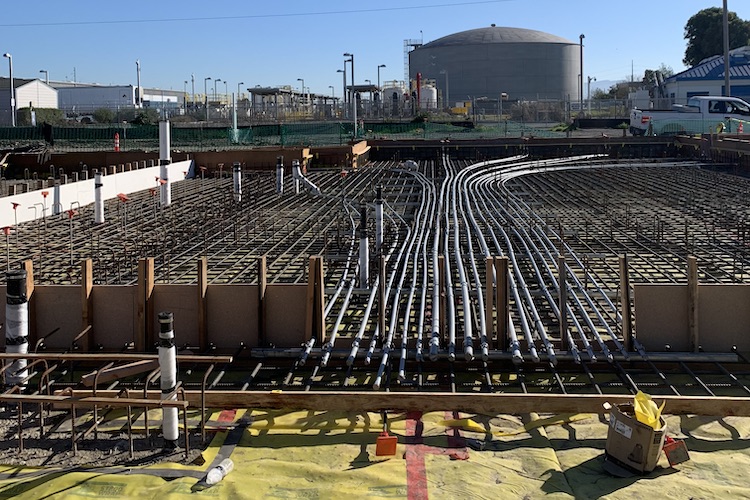Simply put, yes. The last two years plus have been remarkable in terms of dynamic and compounding events affecting the global supply chain, thus resulting in market uncertainty. Issues ranging from the COVID-19 pandemic to the war in Ukraine have created layered and worsening impacts which continue to present challenges to the global economy. The direct impacts Walsh has experienced during this time have forced us to have a different outlook on key delivery considerations. One potential solution, collaborative delivery, can provide cost control for owners in a variety of ways. Now, more than ever, having a direct conduit to the current local and global construction market via a design-builder or contractor as part of your team during design can be one of the most impactful decisions owners can make when choosing a project delivery method.
A great example is the industrial electrical equipment market. Most owners have strong preferences, if not outright sole source requirements, for items like switchgear, transformers, and motor control centers. These industries are struggling to maintain lead times for equipment which, in many recent project examples, have defined project critical paths. Having the entity responsible for purchasing this equipment—and management of the project construction schedule providing real-time market status updates—can help set realistic expectations for key decisions, as well as provide alternative approaches to the construction sequence. Presenting a substitute vendor can also be a significant value proposition. In today’s market, collaborative delivery projects can optimally leverage early procurement for long-lead electrical items, allowing projects to remain on schedule where hard-bid projects have few alternatives but to wait in the long lines like everyone else. Walsh has seen lead times on switchgear and transformers more than double on multiple projects in the past year. Impacts to schedule often manifest themselves as dollar signs in traditional design-bid-build delivery. If the contractually defined schedule does not account for supply chain issues, the bidding contractors will have to mitigate schedule issues by either paying for expedited supply and delivery or compressing the schedule, which is typically less efficient. The bottom-line impact to owners is greater cost and more uncertainty. What was previously an owner’s preference or requirement may not be as rigid once the full extent of the associated costs are known. The proof is in the number of hard-bid projects which have seen significant increases over engineer estimates.
Another example of leverage an owner can implement in collaborative delivery is the ability to phase or sequence work more accurately and potentially more aggressively. Challenges in supply chain logistics can be better mitigated with careful sequencing of work to manage unexpected lead time issues. Previously, stock items like valves, piping, and process equipment have seen lead times grow significantly. In a hard-bid environment, lead times are hard to accurately incorporate into a schedule prior to bidding. Vendors can be reluctant to provide realistic lead times to owners or engineers, and when a contractor starts the bidding process the true impact—both cost and schedule—is fully realized. In collaborative delivery, not only can the significance of these impacts be better identified earlier in the project evolution, but the potential for viable alternatives (e.g., different materials, alternate vendors) can be presented, discussed, and decisions made by the owner with a fuller understanding of the potential trade-offs. The ability to craft a project schedule with real delivery dates and a detailed understanding of a work sequence can lead to improved efficiency and greater cost certainty.
Finally, the nature of collaborative delivery is a powerful tool for owners to manage and mitigate market-driven price variability. One of the key benefits of collaborative delivery is the change in risk allocation and risk management. In a design-bid-build environment, bidders will typically include cost for risks, such as market variability, which in current conditions will drive costs up in a way the owner has limited control over. In a collaborative delivery environment, the team can identify risks and monetize potential impacts and allocate contingency dollars. Equally important, the control of contingency dollars will be acceptable to all parties. This transparency and more direct control of costs is a hallmark of collaborative delivery and a powerful tool to manage and mitigate costs in highly volatile times, like those we find ourselves in today.

